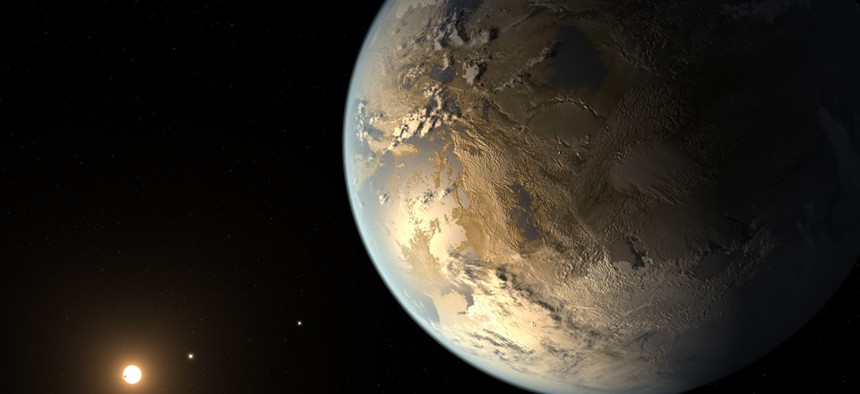NASA Found the New ‘Earth-like’ Planet Using Old Data

NASA
Kepler Space Telescope found a lot of data before it malfunctioned in 2013; scientists are now going back through it.
With much fanfare, NASA announced this week that its Kepler Space Telescope had discovered the first Earth-size planet that orbits a parent star in the so-called habitable zone, where temperatures could allow liquid water to collect on the surface.
The planet has been named Kepler-186f, and the discovery itself is a first. Of the 1,700 confirmed planets Kepler has detected, the telescope found many that were either similar in size to Earth or that orbited in a star’s habitable zone, but Kepler-186f is the first to achieve both.
Certainly, it’s an exciting time for NASA, but in a particularly interesting twist, the space agency and its team of scientists at Ames Research Center in Moffett Field, Calif., didn’t find this planet in new data from Kepler; it actually came from an archived trove Kepler generated before the telescope malfunctioned in May 2013.
Even without Kepler hunting for planets in the same way since, scientists have continued to pour over old data collected by the $600 million telescope since it was launched in 2009, using new techniques to find planetary diamonds in the rough.
In fact, NASA announced the confirmation of 715 new planets in February, all unveiled through a new method called the “verification by multiplicity technique,” which examined possible multi-planet systems Kepler detected in its first two years.
Much like those newly-confirmed planets, evidence for Kepler-186f already existed -- not light-years away in space, but stored away in a NASA facility. Scientists believe there may be hundreds or more planets waiting to be found in existing data.
Even more reason for optimism for planetary scientists: Two full years of Kepler data remain to be explored.
NASA officials have even suggested the agency might use its D-Wave 2, a quantum computer it operates in partnership with Google and the Universities Space Research Association, to pour over existing Kepler data.
All in all, it’s a very exciting time for NASA.
"The discovery of Kepler-186f is a significant step toward finding worlds like our planet Earth," said Paul Hertz, NASA's Astrophysics Division director at the agency's headquarters in Washington. "Future NASA missions, like the Transiting Exoplanet Survey Satellite and the James Webb Space Telescope, will discover the nearest rocky exoplanets and determine their composition and atmospheric conditions, continuing humankind's quest to find truly Earth-like worlds."
Meanwhile, NASA is in the latter stages of determining whether to approve a new mission called “K2” for Kepler. Since the second of its fourth gyroscope-like reactionary wheels failed in May – it requires three to navigate precisely enough to gaze at stars – NASA has been exploring alternative ways for Kepler to effectively carry out science. If approved, K2 would attempt to make use of the sun’s solar wind to stabilize the telescope in conjunction with its two operational reactionary wheels over intervals of several months.
Whether Kepler is repurposed or not, scientists have more than enough data to keep searching for Earth-like planets through information that is already at their fingertips.
NEXT STORY: How the U.S. Is Vulnerable to Terrorism in Space






